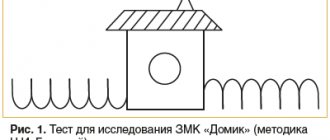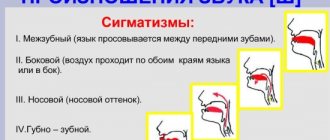When parents notice a speech defect such as burr in their children, they begin to take their children to speech therapists and take various measures to eliminate incorrect pronunciation. But there are people who deliberately want to know how to learn to burr. One of the main reasons for this desire is to study French. Also, many young people want to imitate their idols (for example, the leader of the group “Okean Elzy” Svyatoslav Vakarchuk, the rap artist “Guf” and many others are known for their incorrect pronunciation of this sound).
Imitation is a way to study burr
How to start burring correctly? First of all, you need to know well how to pronounce the correct letter “R”. Only then can we study the mechanism for reproducing the grazing “P”. You need to compare them and understand how they differ from each other.
Carrying out the analysis, it will be clear that when a person pronounces the usual sound “R”, he actively uses the tip of his tongue. Unlike the usual sound, the grazing “P” forces the use of the lingual root and larynx.
When pronouncing the usual “R”, you need to feel where exactly the speech organ is located at this time. After this, you need to slowly move the tongue from the tip to the base. The “burr” sound “P” is produced using air currents directly in the throat, without involving the end of the tongue.
In order to learn by imitation, you will need to stock up on various works in French: music, films, programs. When using them, you should try to repeat the expressions of the French. It is important to ensure that the words sound similar.
If you want to imitate your Russian idols, then use their material accordingly.
To control your pronunciation, you can use a voice recorder. Use it to record your voice and listen to it, assessing the correctness of the reproduction of the defective “P”.
How to learn to burr
Many people suffer from this defect from an early age, turn to various doctors and try in every possible way to get rid of burr. Some may find it cute, but there are options for complications in life associated with burring. Let's give a definition - a violation of the pronunciation of sounds with normal hearing and articulation apparatus. Contrary to popular belief, burring is not a disease at all, but only a small congenital defect that can be eliminated with the help of training, and in more complex cases, with the intervention of a speech therapist. The cause of burr may be one of the following: • The first reason is a short frenulum, which limits the upward movement of the tip of the tongue. • It happens that the defect is formed during the prenatal period. • Inability to perform the necessary actions with the tongue for clarity of speech.
Exercises for those who want to burr
There are still ways to learn to burr. These include special exercises. They can also be found in the French language program. There are a lot of exercises that allow you to acquire the skill of grazing the letter “P”. It is worth highlighting some of them:
- It is necessary to stand in front of a mirror, because it is much easier to do the exercises when you can control the work of your speech organ. Next, you will need to press the middle of the tongue to the palate, and apply the tip to the lower jaw. In this position of the organs, try to reproduce the sound “R”.
- Now you need to again touch the palate and pharynx with the base of the speech organ, while straining it strongly. Try to pronounce the letter again.
- This exercise requires a glass of water. You need to gargle while pronouncing the sound “R”. After this, you should try to do the same thing, only without the help of water. The sound should be vibrating.
All these exercises must be done regularly. You need to understand that nothing will work out the first time. If you are diligent, then soon all these activities will not cause any difficulties and your goal will be achieved.
How to learn to burr a letter
To achieve this goal, it is necessary to do several exercises: • For people who have previously studied foreign languages in the school curriculum, it is quite easy to remember this. During its execution, the central part of the tongue is adjacent to the palate, with the tip touching the lower teeth. Having accepted this position, try to pronounce the sounds R.
• Another action, similar to the previous one. But many teachers prefer it. So, stretch your tongue forward, reaching the middle to the palate, or pharynx. Moreover, there is no point in actively pressing; just touching it is easy enough. And start making R sounds, at first it may not work, but with constant use, the effect will definitely be achieved.
Studying sayings and tongue twisters
To learn and consolidate the skill of pronunciation of the grazing sound “R”, it is good to use sayings and tongue twisters in French. Finding them is not difficult; there are a huge number of them on the Internet.
Having chosen short and simple expressions to begin with, you can begin to pronounce them. Before doing this, it is better to listen to how the French themselves do it. Over time, you can move on to longer and more complex phrases. For example, you can take the following tongue twister:
"Rat vit riz Rat mit patte à ras Rat mit patte à riz Riz ciut patte à rat."
You can also use this example of a saying:
"Dans la gendarmerie, quand un gendarme rit, tous les gendarmes rient dans la gendarmerie."
You can also find out how to pronounce these expressions on the global network. If a person can master the correct pronunciation of tongue twisters and sayings, then all the work was not in vain. After all, their reproduction is not so simple.
Types of burr
There are different types of rotacism. Depending on its etiology, there are two types:
- Velar. The vibration occurs at the edge of the soft palate.
- Uvular rotacism. The vibration occurs on the small uvula of the soft palate.
In a broad sense, there are several forms of burr (rhotacism):
- Simple or monomorphic. The pronunciation of one or more sounds of one group is impaired - “S Z C”, “ZH Sh Ch”.
- Polymorphic or complex. The articulation of phonemes from different groups is impaired.
- Physiological. Also called age-related. With it, sound pronunciation is impaired in children under five years of age, which is associated with insufficient development of articulatory organs.
- Functional. Rotacism develops in the absence of problems with the articulatory apparatus, central nervous system, hearing and other devices and systems.
- Mechanical or organic. The development of rhotacism is associated with congenital or acquired pathologies of the speech apparatus.
An accurate diagnosis can only be made by a speech therapist. The definition of burr determines the choice of methods for its correction.
Rotacisms
Correction of burr in adults and children depends on the form of rhotacism. They are as follows:
- There is no “R” in the speech (handle - uchka, river - eka);
- Velar rhotacism or soft pronunciation. The root of the tongue comes into contact with the soft palate, namely its lower edge. A stream of air passes through the gap between them during pronunciation, causing the palate to vibrate.
- Uvular rotacism. Often called "throat".
- Side. The vibration occurs on the side of the tongue, not on the tip. This is how a sound similar to “l” or “rl” appears.
- Bilabial. This type is also called labial, labial or bilabial. Distortion occurs when the lips vibrate, this is how it turns out “prr”. Speech therapists call this sound a coachman's sound.
- Interdental or interdental. Sound pronunciation is caused by the position of the tongue between the teeth.
- Single-strike or proto. Reminds me of “d”, it’s impossible to pronounce the long “RRRRRRRR”.
- Buccal. The exhaled air passes between the cheeks, which causes vibration.
- Nasal. The root is in contact with the soft palate, and air passes through the nose.
- replacing “P” hard with soft.
- Labiodental. The sound is formed between the lip and the upper teeth.
- Laryngeal or laryngeal.
Depending on the form of rotacism, certain exercises are selected aimed at correcting this phenomenon.
Pararotacisms
Pararotacism is the replacement of the rumbling “R” sound with a softer one. The main causes are paresis, short frenulum, impaired phonetic hearing and copying incorrect pronunciation from adults. With pararotacism, the following “P” substitutions occur:
- c: appears in the absence of vibration - “wuka - hand”;
- d: it turns out “hand - duka”;
- g: “hand – guka”;
- n: hand – puka;
- l: hand - bow;
- s: hand – yuka;
- y: hand – yuka.
Correction of pararotacism has many similar sections to burr. The most basic exercise for this is tongue twisters for burr.
Functional burr
Functional burr can develop in a child due to chronic diseases. Another common reason is pedagogical neglect - when a child is given insufficient time from parents and adults, the child develops slowly, not because he has problems with the intellect, but because no one works with him or they do not do it enough.
Often this phenomenon develops in children from bilingual families, that is, adults speak different languages, or from families where one or both parents have such problems. In this way, the child copies the pronunciation of adults. Also, this type of burr may appear due to the presence of disorders of the articulatory apparatus or underdeveloped phonetic hearing.
Organic burr
Occurs due to the structural features of the oral cavity - teeth, bite, tongue (frenulum). A child or adult may burr due to improper jaw structure or lack of teeth. In this case, it is impossible to get rid of rotacism without the help of dentists and an orthodontist. The organic form can appear during life as a result of trauma.
Sensory tongue-tiedness (dyslalia)
This speech disorder is also called tongue-tied or dyslalia. This consists of the inability to pronounce certain sounds or series of sounds. Tongue-tied sounds can be all vowels or all consonants. In the simplest cases, tongue-tiedness affects one or more. Such phonemes are sometimes dropped out or replaced by others. Tongue-tiedness can be called the most common speech defect in a child.
Functional tongue-tiedness is a consequence of improper speech development. It usually occurs at 3-4 years of age and can continue into preschool age. Cases of tongue-tiedness in adults are rare, but they do exist.
Music for learning grazing
A very good way to become a person who can burr is French music. Some artists even use too much grease to give their songs the most appeal. The music of such performers will be the best option for learning burry pronunciation.
Especially if a person knows how and loves to sing, then such an activity will bring a lot of pleasure and at the same time benefit. You just need to choose songs you like, which you can do online or by purchasing a CD of French music in a store.
Causes of speech impairment
Burr can be caused by a variety of reasons. This can lead to:
- physical or neurological weakness (occurs with chronic diseases);
- parents do not correct the child’s speech when there are mistakes in it or the child pronounces some sounds incorrectly;
- the child hears incorrect speech from adults and copies it;
- phonetic hearing and sound recognition are not sufficiently developed;
- incorrect articulation;
- pathology of the articulatory apparatus.
Burrs can occur after injuries. This is the main reason for the appearance of such a defect in adults. In some cases, correction of burr in adults cannot be carried out without the help of other specialists.
How can you use the Russian sound “X”?
Indeed, there is an exercise that allows you to achieve a smooth pronunciation of the letter “P” using the Russian sound “X”. After all, these two sounds are very similar in the mechanism of movement of the speech organs.
First you need to find a word with the letter “X” and pronounce it several times in order to understand how the tongue moves at this time. Then play "X" separately. Then try to replace the dull sound with a voiced one. If everything was done correctly, a defective “R” sound will be heard.
Thanks to such simple methods as burring the letter “P”, you can achieve success. The main thing is to do the exercises regularly. At first it will be difficult, as in any educational process. But if you show diligence, you will certainly become burry.
Even if the skill of pronouncing the grazing “R” is acquired, you still should not completely abandon the exercises, especially if you use the correct pronunciation in your normal speech. It is necessary to constantly consolidate the result and improve so that, if necessary, you can dramatically rearrange the articulation of this difficult sound.
French pronunciation
This language is very soft and melodic. The “r” sound in it has a pleasant burr. The Parisian version is the most difficult to pronounce.
But in provincial towns you can also find the familiar dialect with a hard “r”.
The main rule in reading French and the difference between the language and English and German is that the “r” at the end of a word is never lost and is pronounced the same way as at the beginning and middle. This sound belongs to the voiced and sonorant ones. But it is formed not like Russian - not in a large language, but in a small one. That is why it is called uvular.
According to the method of formation, the sound is fricative. This means that during pronunciation the vocal apparatus does not close, although it approaches quite strongly. Turbulent turbulence occurs in the mouth, which produces an audible result. The Paris version of this sound has no vibration or friction noise. It is completely slotted.
At the end of words in French, “r” can have up to 2 vibrations. There are several more pronunciation options in the regions. This is a rolling sound, similar to Russian and produced by the front of the tongue, but less vibrating and more sonorous. And graced, which is distinguished by its posterior lingual origin.
In addition to differences in the amount of vibration, noise in the sound is taken into account. This is especially important for Parisian pronunciation. And at the end of words, “r” becomes voiced and sonant, but not dull, as in the Russian sound.
Correct articulation in velar (classical) French pronunciation implies movement of the edge of the soft palate, less often the back surface of the tongue. In this case, the small tongue is in a tense state, but does not vibrate.
What you should pay attention to when learning French on your own
Each self-instruction manual requires you to pay attention to those les sons (“les so” - sounds) that are not in the student’s native language. The greatest difficulties in French are caused by:
- nasal sounds. La nasalité (“la nazali te” - pronunciation through the nose) is often not perceived by Russian speakers as something obligatory. Meanwhile, neglect of nasalization not only spoils French pronunciation
, but also distorts the meaning of what is said. Compare: main (“me” – hand) and méne (“men” – he/she leads). To reproduce a “nasal” sound, pinch your nose with two fingers and try, without straining, to pronounce a short Russian word with the sounds “n” or “m” at the end (Don, tone, house); - “r” grasseyé (“grasey e” – graced). Burr is considered a diction defect in the Russian language. This is why pronouncing this sound in French causes some embarrassment. A Russian “r” pronounced in a French word will not change its meaning, but will create an accent that is unpleasant for native speakers. A rolling "r" is also considered profanity. To reproduce the perfect French sound, it is enough to pronounce the Russian “x” with your voice.
Is it possible to learn French from scratch on your own? Of course it is possible, but it requires additional effort and perseverance, and you also need to pay attention to audio materials. For those who want to create a good base for further study of French, we recommend paying attention to
In the introductory course we will look at the sounds of the French language, giving, where possible, their approximate sound correspondences in the Russian language and showing for each sound which French letters or letter combinations it is conveyed.
Introductory phonetic
the course consists of 12 lessons and
does not
include grammar
How to conduct a speech therapy warm-up
All classes with a speech therapist or at home should begin with a warm-up. It has a number of tasks:
- develops motor skills and articulation;
- improves lower diaphragmatic breathing;
- develops oral and nasal pronunciation of individual sounds;
- activates the muscles of the palate, tongue, and pharynx;
- the child's voice and ability to speak with expression are assessed;
- a sense of rhythm is developed;
- improves the musculature of the articulatory muscles.
Here you can use various tongue twisters, rhymes, and children's songs.
If it doesn't work out
When not a single exercise helps you adjust the sound correctly, and it doesn’t work out even with a teacher, you should consult a dentist. He will check the structure of the jaw apparatus and the length of the frenulum. This is a small piece of connective tissue between the tongue and the floor of the mouth.
If the frenulum is short, this may become an obstacle to the correct pronunciation of sounds. In this case, it is lengthened by making an incision. It is performed in a few minutes under local anesthesia, and does not cause discomfort within a couple of hours after the operation. After recovery, you can start exercising again.
Learning foreign languages requires a lot of effort to achieve correct pronunciation. But competent daily practice always bears fruit. The ability to speak and sing in another language opens up great prospects both for creativity and for communicating with representatives of another culture and nationality. And this is important for social development and human formation.
Correct R sound
Speech therapists recommend putting this sound last. This usually happens at 5-6 years of age. Until this age, incorrect P is considered normal. Many children begin to pronounce it on their own, without the efforts of a speech therapist or special exercises. There are cases when the help of a speech therapist may be needed earlier. This is necessary if P has already appeared, but in the wrong form. It can be replaced by L, V and others. Normally, P should be pronounced when:
- relaxed lips;
- the distance between the lower and upper jaw does not exceed 5mm;
- the tongue is raised to the gums of the upper teeth;
- the tongue should vibrate;
- the middle part of the lingual muscle is slightly arched;
- the back part is pressed against the palate;
- the sides are pressed to the top;
- the vocal cords undergo intense vibrations.
Only in this case can the pronunciation be considered normal and correct.
Definition
Burr is a person’s inability to clearly reproduce the letter “r”. According to statistics, this speech disorder is most common among children and adults. As a rule, correction of the defect is carried out in childhood, when it is easier to eliminate it. However, many parents do not consider this a pathology and do not seek treatment, despite the fact that children subsequently experience difficulties communicating with peers.
A little introductory information from an experienced burr
Burry people speak from their throats. I also spoke. This makes for a completely different sound. Just as the throaty R is unusual for you, the tongue-tip R is unusual for the burr. But it is not necessary to burr at all sounds, both hard and soft. I already talked about this above. I had practically no problems with R, as well as with L.
But this does not mean that R was easy. These sounds are pronounced completely differently. Like L and L. Do you think it’s possible to burr with L? It’s easy, try to pronounce it with your throat: press the root of your tongue to your upper jaw and try to say L. Yes, yes...
The letter e is at the end of words. French accent. French vowel clarity
Letter e
at the end of words in most cases it is not readable, for example: dam
e
- lady, arab
e
- Arabic, -aya, -oe.
The stress in French words falls on the last syllable, for example: papa - dad. It will not be indicated further in the transcription.
All French vowels sound equally distinct and bright both under stress and in unstressed position, for example: panama - Panama. All three [a] are pronounced equally energetically and are not “swallowed” or changed.
Exercise No. 6.
Read, not forgetting that the stress in French words always falls on the last syllable:
Why do some people burr?
The answer to the question of what and why people burr is very simple. In medical terminology, this feature is called dyslalia - a violation of correct sound pronunciation. Sometimes this phenomenon is also called rotacism. A person who burrs often has completely normal articulation and good hearing - but that’s not the point. There may be several reasons for rotacism.
What prevents you from pronouncing the letter r correctly?
The main reasons why this sound is not pronounced are problems associated with the oral cavity.
Read also: Room interior in pink tones (photo)
Short hypoglossal ligament
Another name is bridle. It is this that prevents the tongue from moving freely. Usually this defect is corrected in the maternity hospital. It can also interfere with your baby's ability to latch onto the nipple properly during breastfeeding. If this defect was discovered at school age, it is stretched with speech therapy exercises.
Problems with phonemic awareness
Phonetic hearing is the ability to hear and perceive sounds correctly. At three years old, children should be able to distinguish sounds that are similar to each other, although they cannot yet pronounce them. In some cases, such disorders are associated with adenoids and other diseases. Thus, the child does not hear a certain sound and in his speech he replaces it with another similar one.
Incorrect speech breathing
To correctly pronounce sounds, including the letter P, you need to control your exhalation. Not all children can do this at an early age. Some raise their shoulders to do this, others do not know how to regulate their breathing during speech.
Setting “R” according to Khvattsev
This technique was created by teacher Mikhail Efimovich Khvattsev in 1959. This method consists of several successive steps:
- Composing individual phrases containing similar words that differ by one letter - pitifully hot, thief-ox and others.
- Causing vibrations in the tongue mechanically. To do this, knock on the gums.
- Getting the sound "R" from "D".
- Bringing pronunciation to automaticity, we pronounce syllables and words with this letter.
This technique is actively used today, although it appeared during the USSR period.
Home correctional exercises
Where to start staging sound at home? First you need to prepare your lips and tongue using articulatory gymnastics, which you read about above. Once you have prepared the base, start staging. There are several effective ways to stage it.
From the sound "d"
Ask your son or daughter to say “d-d-d” loudly. The tip of the tongue rests heavily on the alveoli (tubercles on the roof of the mouth). You need to speak protractedly and without stopping. The tongue is pressed tightly against the tubercles. At some point, the tongue will begin to vibrate, and the baby will say “ddd-rrr.” A start!
Then you can complicate the task: add syllables in which the vibrant sounds hard: “dra”, “dru”, “dro”.
When the baby masters the skill, it’s time to introduce vibrant into speech. Move on to pronunciation of words: “dragon”, “fight”, “friendship”, etc.
Then replace the syllable “dr” with “tr”. Let the baby say the words “coward”, “throne”, etc.
The final stage is to turn off the sound “d”. Choose other words and phrases, for example: “thunder - grenade”, “ford - beard” and others.
Method of setting from the sound “zh”
If the baby pronounces “w” correctly, you can build on it. Ask your daughter or son to forcefully say “w” and at the same time move the tongue as far into the oral cavity as possible. You should get a single-stroke “r”. You need to repeat this exercise until it is fixed, and then, by analogy with the first technique, we bring it to automatism and introduce it into speech: we start from the syllable “zhr”, then “dr”, “tr” and further.
Method of setting from the sound “s”
If the baby pronounces “s” correctly, you can build on it. It is usually pronounced while exhaling, but when placing the “r” it must be pronounced while inhaling.
Ask your baby to say “sssssss,” then inhale a little through his mouth and press his tongue against the bumps on the roof of his mouth. It should look like a short "r".
The further scheme is the same as with other techniques.
Introduction of vibrant into speech
In simple cases, you can not only teach your baby to pronounce “r” on your own, but also introduce it into speech. To do this, first bring the isolated sound pronunciation to perfection. And then introduce it into speech using the following exercises:
- first the baby pronounces it in syllables;
- then pronounces it in words, with different syllables: “r” should be at the beginning, and in the middle, and at the end;
- connect stories, proverbs, phrases - this is the final stage.
Do all the exercises in the form of a game - this is how little children learn any material well. You will need imagination to captivate your son or daughter. Classes should be a joy for the little one, otherwise he will be tense and even the most effective exercise will not help achieve the desired result.
Why don't classes help?
For what reasons may difficulties arise in staging sound at home?
Firstly, the baby is not 4 years old. Before this age, it is pointless to even try to put “r”, since it simply does not exist and cannot exist - this is the pattern of speech development in children. It appears the very last. Parents, don't rush things!
Secondly, incorrect articulatory posture. Should be normal
the lips are stretched, the tongue is raised up, its tip is trembling, there is a strong directed air stream, the vocal cords are vibrating. Perhaps the baby is simply adopting an incorrect articulatory posture. If there is insufficient movement, the “r” will not give in to it.
Thirdly, improper breathing. To be able to pronounce “r”, you need a strong directed air stream that makes the tip of the tongue vibrate. If the baby does not distinguish between mouth and nasal breathing, you need to first work on this point.
Fourthly, unformed phonemic hearing. The baby may simply not yet perceive “r” by ear and, accordingly, cannot distinguish it either.
Fifthly, organic reasons. We are talking about the structural features of the facial apparatus - a short frenulum, a large or small tongue, for example. This also includes neurological disorders.
If you exercise with your baby at home, but the exercises do not produce results, consult a doctor. He will identify the cause and offer effective treatment methods for your child.
conclusions
If you notice that your preschooler has problems pronouncing “r,” contact a speech therapist. The specialist will conduct speech therapy tests, evaluate your child’s articulatory apparatus and identify the cause of the disorder in sound pronunciation. This will allow us to develop a correction program that will be effective specifically for your child.
You need to exercise regularly. As a rule, classes take place 2–3 times a week. But parents should also be involved in the process. You need to continue doing the exercises at home - then the result will not take long to arrive.
If a consultation with a neurologist or surgical intervention (for example, cutting the frenulum) is necessary, this will allow you not to waste time and quickly solve the problem.
Typically, parents of children aged 5 to 6 years turn to a speech therapist. But if you notice a problem earlier, don’t wait - go to a specialist. But you shouldn’t go earlier than 4.5 years either.
Is it possible to change the pronunciation of a letter in 5 minutes?
According to experts, it is impossible to radically change pronunciation in a short time. This requires a lot of effort and work. When there is a desire, nothing is impossible. Regularity of classes, readiness to learn and diligence will definitely give the desired results.
Some people manage to place a grazing consonant within a month, others spend six months or more on this task. It all depends on a person’s abilities, ear for music and willingness to reproduce new sounds of a foreign language.
Once a skill is acquired, you should not refuse to continue practicing. This is especially true for those people who do not burr in their normal lives. To improve yourself, you need to do exercises regularly over a long period of time. And only then will it be possible to rearrange the articulation if necessary.










